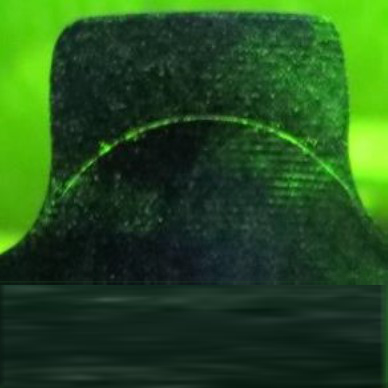Steel components in the engine and transmission sector are often induction hardened to increase the mechanical load capacity of the surface. Defects in the hardening process can lead to cracks, which must be excluded for quality and safety reasons. The edevis inline inspection technology replaced the labor-intensive magnetic particle inspection at two automotive supplier companies and reduced cycle times to a few seconds.
In the induction hardening process, only the areas near the surface and not the steel or forged components as a whole are hardened. In the transition from hardened to non-hardened areas, the material properties change abruptly. This results in stresses that can lead to cracks. These can be detected with induction thermography not only reliably, but also very quickly.
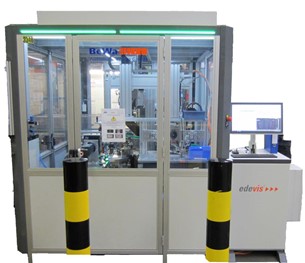
The application:
Hardened forged components were to be tested for cracks quickly and reliably without contact and without chemical additives. The customers were automotive suppliers for passenger cars and commercial vehicles. One application involved the automated inspection of individual cams of assembled camshafts for commercial vehicles – in many new engines, camshafts are often no longer forged in one piece, but assembled from individual parts. In the other application, passenger car parking wheels were tested that are installed in transmissions: These are used in automatic transmissions and, when the selector lever is set to “P”, lock the transmission in combination with an engaging pawl, thus preventing the vehicle from rolling away. As an example, the application of the parking lock gear fit test is described in more detail below.
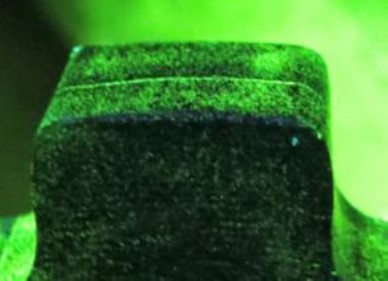
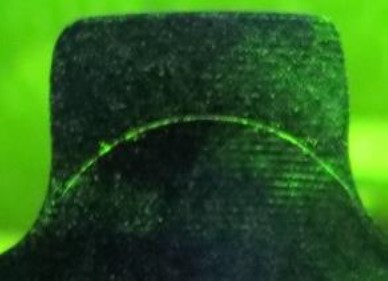
The saving (for the customer):
In the past, up to 10 inspectors were used for the replaced magnetic particle inspection of the parking lock wheels. This laborious manual process was replaced by an inline inspection with a cycle time of about 8 seconds.
The solution:
An inline inspection system with induction thermography was used. Due to the enormously high inspection speed of one tenth of a second per exposure, fast cycle times are no problem. Since infrared radiation basically behaves like visible light, it can be inspected from several sides simultaneously using mirrors. Thus, components can be inspected from three sides without the need for extra repositioning.
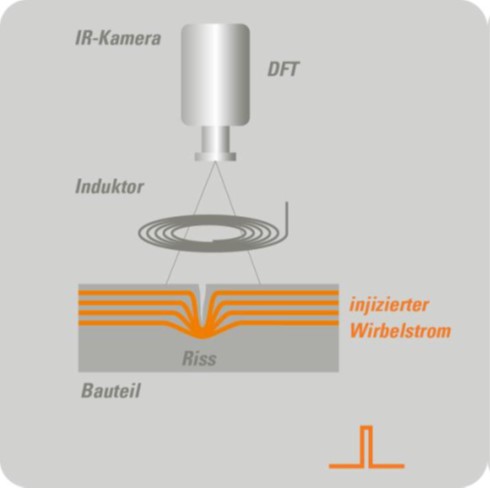
The challenge:
Since the measurement is done with imaging techniques, in practice one has to eliminate some external disturbances in the form of vibrations or reflections. This is solved by recording not just a single image, but a film sequence whose duration is less than a tenth of a second. Fourier transforms can be used to amplify crack signals and remove interfering influences. When crack testing hardened components in the manufacturing process, another variable is added: heat. The components are hardened between about 800 and and 950 degrees Celsius, quenched, stacked and fed to the testing machine. The last part deposited has a significantly higher residual heat than the first. Thus, a temperature window between 80 degrees and room temperature was defined for the components during the test. These differences can also be averaged out with the method.
In other areas, it is also necessary to cope with process variations, e.g. due to different component batches or variations in the pre-process such as different lubricants, which can be reflected in the results. Dirt, for example, does not occur during laboratory testing, but in production, contamination, scaling, and coking, such as from burned-off lubricant residues, cannot be prevented. These sometimes appear as dark spots on the test results of the gear tooth surface. The advantage of imaging methods such as this is that a suitable image processing strategy and learned comparison images can be used to enable the inspection technology to deal with such deviating process effects.
The project planning:
The customers first sent us some selected test specimens, on the basis of which we carried out a feasibility study in our test laboratory. This was followed by joint process development, during which requirements and implementation options were coordinated with the customer and the plant manufacturer. This also included on-site production. After successful implementation, it went into series start-up support and teach-in with the customer up to acceptance = full-service package. However, other implementation processes and forms of cooperation are just as possible and can be coordinated on a case-by-case basis. Semi-skilled operators are sufficient for this application at the testing machine, since the machine inserts the components independently and classifies them in IO or NIO.
